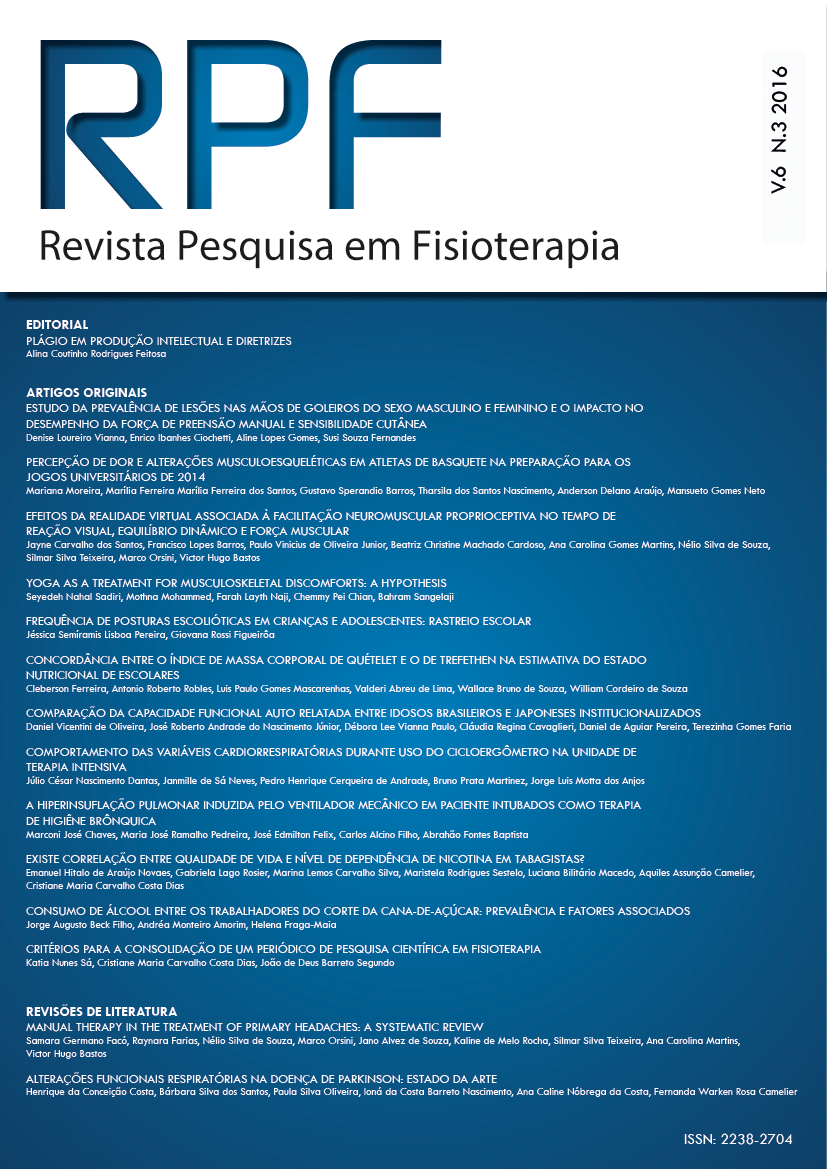IS THERE CORRELATION BETWEEN QUALITY OF LIFE AND NICOTINE DEPENDENCE LEVEL IN SMOKERS?
DOI:
https://doi.org/10.17267/2238-2704rpf.v6i3.999Keywords:
Tobacco, Quality of life, Addiction to nicotineAbstract
Introduction: The consumption of tobacco predisposes to disease, functional disability and high morbidity and mortality rates, resulting in an impact on quality of life (QOL) of the population in general. The QOL is an important topic and the fact its association with the level of nicotine dependence can be a way to sensitize the dependent on that substance to discontinue the consumption. Objective: To correlate the quality of life and the level of nicotine dependence in smokers. Materials and Methods: Cross-sectional study, consisting of smokers admitted to the program “Quitting Smoking Without Misteries” EBMSP / Brotas Unit, both sexes and age ?18 years. Smokers with limited understanding of the questionnaires were excluded from the sample. The following validated questionnaires were applied: Fagerstrom Tolerance and Whoqol-Brief. Results: The sociodemographic characteristics and clinical of 64 participants studied showed a predominance of females 48 (75%), average age of 53.8±10.0 years, where 31 (48.4%) had a high-school and two (3.1%) were illiterate. In relation to the number of packs of cigarettes smoked per year, the median was 34.37(21-49) sets/year. And a median of 2.0(2,0-4,0) in the classification of nicotine dependence according to the scale of Fagerstom,
translating into a lower dependence. The analysis of inference Whoqol-Bref and the level of nicotine dependence has not revealed a correlation with the domains physical, psychological, social and environmental development, nor with the total score of QOL. Conclusion: This study did not show a significant correlation between QOL and the level of nicotine dependence, as well as smoking history.



